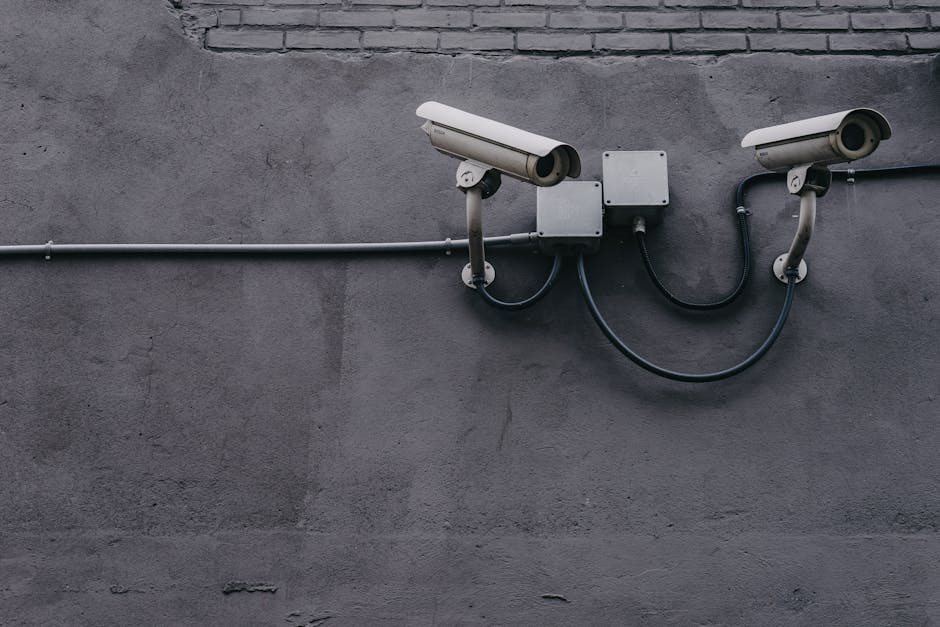- Evolution of Smart Home Security Systems
- Integration of Artificial Intelligence and Machine Learning in Home Security
- The Role of IoT Devices in Enhancing Home Security
- Advances in Surveillance Technologies: Cameras, Sensors, and Beyond
- Cybersecurity Measures in Smart Home Systems
- User Experience and Accessibility in Smart Security Solutions
- Future Directions and Innovations in Smart Home Security Technology
Evolution of Smart Home Security Systems
Over the past decade, the landscape of home security has experienced significant transformation, influenced primarily by rapid advancements in technology. Initially, traditional home security systems comprised basic alarm systems and closed-circuit television (CCTV) cameras. These installations focused on reactive measures, primarily sounding alarms during unauthorized access.
The progression to smart home security systems began with the advent of internet connectivity and wireless technology. Modern systems leverage internet connectivity to provide real-time alerts and remote access, allowing homeowners to monitor their premises from anywhere in the world through their smartphones, tablets, or computers. This transition marked a shift from reactive to proactive security solutions, enabling real-time surveillance and immediate notification of potential threats.
Additionally, improvements in communication protocols like Z-Wave and Zigbee have facilitated the seamless integration of various smart devices. These low-power, wireless networks enable the interconnection of diverse devices such as cameras, motion sensors, smart locks, and more, forming a cohesive and unified security system. As a result, homeowners can now create customized security ecosystems tailored to their specific needs.
Smart home security systems have also integrated automation into their functionality. The inclusion of automated lighting, alarms, and even smart doorbells has enhanced the ability of these systems to deter intruders effectively. For instance, automated lighting can be programmed to turn on at specified times, giving the appearance of occupancy and thereby deterring potential burglars.
Another significant development is the integration of cloud computing into smart security solutions. Cloud-based video storage and data management systems offer enhanced reliability and scalability. By storing footage and data on remote servers, these systems reduce the risk of data loss due to physical damage or tampering. Moreover, cloud integrations facilitate software updates and maintenance, ensuring that security systems are always up-to-date with the latest features and patches.
The drive towards smarter security solutions is also echoed in the rising popularity of biometric authentication methods. Biometric systems, which use unique physical characteristics such as fingerprints, facial recognition, and voice recognition, deliver a higher level of security compared to traditional passwords or key codes. They add another layer of protection, making unauthorized access significantly more difficult.
Overall, the evolution of smart home security systems reflects a broader trend toward interconnected, automated, and highly responsive solutions that enhance the safety and convenience of modern living. This continual advancement underscores the growing importance of integrating advanced technology into home security, paving the way for even more sophisticated systems in the future.
Integration of Artificial Intelligence and Machine Learning in Home Security
Artificial Intelligence (AI) and Machine Learning (ML) are playing increasingly vital roles in enhancing home security systems. The integration of these advanced technologies has markedly improved the efficiency, accuracy, and responsiveness of home security solutions.
Enhanced Threat Detection
One of the primary benefits of AI and ML integration is the enhanced ability to detect potential threats. By leveraging vast amounts of data, these systems can identify unusual activities and anomalies that might signal security breaches. AI algorithms analyze patterns and behaviors to differentiate between routine activities and potential threats, reducing the occurrence of false alarms.
Facial Recognition
AI-powered facial recognition technology has become a cornerstone of modern home security systems. These systems can accurately identify family members, friends, and frequent visitors, creating a personalized and secure environment. Below is a comparison of commonly used facial recognition algorithms:
| Algorithm | Description |
|---|---|
| Viola-Jones | A historical algorithm known for real-time face detection, albeit with false positives in varied lighting conditions. |
| Deep Learning-based | Utilizes neural networks to achieve higher accuracy in diverse environments, suitable for modern smart home systems. |
Automation and Behavioral Analysis
Machine Learning facilitates the automation of various security tasks. For example, ML algorithms can learn the typical schedule and behavior of the inhabitants of a home. Based on these insights, the system can trigger specific actions such as locking doors, optimizing lighting, and setting alarms when unusual behavior is detected.
Predictive Analytics
Predictive analytics, powered by AI, helps preempt potential security threats. By analyzing historical data and identifying trends, these systems can predict the likelihood of certain events, enabling homeowners to take preventive measures. This proactive approach significantly enhances overall home security.
Voice Recognition
Voice recognition adds another layer of security by integrating with AI assistants and home security systems. By analyzing vocal patterns, AI systems can authenticate individuals and control access to home systems effectively. This technology is particularly useful for hands-free operation and can be seamlessly integrated with other AI-driven security features.
In summary, the integration of AI and ML in home security systems introduces a multitude of advancements that significantly improve their effectiveness. From enhanced threat detection to automation and predictive analytics, these technologies are revolutionizing the way home security is managed, providing a more secure and intelligent environment for homeowners.
The Role of IoT Devices in Enhancing Home Security
The Internet of Things (IoT) has revolutionized various industries, and home security is no exception. IoT devices enhance smart home security by providing more interconnected, responsive, and automated systems that offer greater convenience and peace of mind to homeowners.
One of the primary roles of IoT devices in home security is in the creation of integrated systems. These systems enable various security components, such as cameras, sensors, and alarms, to communicate with one another. This communication facilitates real-time monitoring and immediate response to potential security threats. For instance, when motion sensors detect suspicious activity, they can trigger alarms, send notifications to homeowners, and prompt cameras to begin recording instantly.
Key Benefits of IoT Devices in Home Security:
- Automation: Automation capabilities allow for tasks such as locking doors, adjusting lighting, and setting alarms to be managed automatically or remotely.
- Real-Time Alerts: IoT devices can send instant notifications to homeowners’ smartphones, providing real-time updates on any unusual activities.
- Remote Monitoring: Homeowners can monitor their property remotely from anywhere in the world via connected cameras and sensors.
Table: Common IoT Devices used in Home Security
| Device | Description |
|---|---|
| Smart Cameras | Capture high-definition video and often include features like night vision, motion detection, and two-way audio. |
| Smart Locks | Allow homeowners to lock and unlock doors remotely, often integrating with digital assistants and offering keyless entry options. |
| Motion Sensors | Detect unusual movement within a home and can trigger alarms and notifications. |
| Smart Doorbells | Feature built-in cameras and intercom systems, enabling homeowners to see and communicate with visitors remotely. |
Another significant advantage of IoT in home security is the ability for seamless integration with other smart home systems. For instance, security systems can sync with smart lighting systems to deter intruders by automatically turning on lights when motion is detected. Similarly, smart thermostats can adjust the temperature to simulate occupancy, even when the house is empty.
However, the integration of IoT devices in home security is not without concerns. Cybersecurity risks remain a critical issue, as connected devices can be vulnerable to hacking if not adequately protected. To mitigate these risks, manufacturers and users alike need to ensure robust security measures, such as regular software updates, strong passwords, and data encryption.
IoT devices continue to shape the landscape of smart home security, offering innovative solutions that enhance safety, convenience, and control for homeowners. As technology evolves, these devices are expected to become even more integral to comprehensive home security systems.
Advances in Surveillance Technologies: Cameras, Sensors, and Beyond
In recent years, significant advances have occurred in surveillance technologies, enhancing the capabilities and effectiveness of smart home security systems. These innovations primarily revolve around three key components: cameras, sensors, and expanded connectivity features.
Firstly, the development of high-definition cameras has greatly improved. Modern surveillance cameras now commonly feature 4K resolution, offering clearer and more detailed images, which are crucial for accurate threat identification and evidence gathering. Additionally, advancements in night vision technology, such as infrared and low-light sensors, allow for consistent monitoring even in complete darkness.
Moreover, the integration of facial recognition software has become increasingly prevalent. This technology utilizes complex algorithms to identify individuals based on facial features, thereby providing an added layer of security. While privacy concerns exist, the technology’s potential to identify and alert homeowners about unfamiliar persons is notable.
Another key area of advancement is in sensor technology. Modern sensors are now more sensitive and accurate, effectively detecting a range of conditions including motion, temperature changes, and even potential hazards like fire and gas leaks. Below is a table highlighting some of the recent improvements in sensor technology:
| Sensor Type | Improvement |
|---|---|
| Motion Sensors | Improved range and reduced false alarms |
| Temperature Sensors | High precision and real-time monitoring |
| Environmental Sensors | Enhanced gas and fire detection capabilities |
Connectivity also plays a crucial role in the effectiveness of these surveillance technologies. The ability of devices to communicate through Wi-Fi, Bluetooth, or other protocols ensures seamless integration and coordination. This connectivity facilitates real-time alerts and enables remote access and control, allowing homeowners to monitor their property from anywhere using smartphones or other connected devices.
One final advancement is the advent of edge computing in surveillance systems. Edge computing processes data locally on the device rather than in a distant cloud server, thereby reducing latency and improving the speed of data analysis. This is particularly beneficial for time-sensitive actions, such as triggering alarms or notifications during security breaches.
These advances in surveillance technology – encompassing high-definition cameras, smart sensors, and improved connectivity – collectively contribute to a more robust and responsive home security system. As technology continues to evolve, these systems are expected to become even more efficient and accessible, ensuring greater peace of mind for homeowners.
Cybersecurity Measures in Smart Home Systems
As smart home security systems become more prevalent, the issue of cybersecurity has become a critical focus. Ensuring that these systems are secure from cyber threats is essential to protect the privacy and safety of users.
Security Protocols and Encryption
Modern smart home security systems incorporate robust security protocols and encryption techniques to safeguard data. Communication between smart devices and central hubs typically uses Advanced Encryption Standard (AES) with 128-bit or 256-bit keys, providing a high level of security. Additionally, many systems utilize Transport Layer Security (TLS)</em) to ensure secure data transmission over networks.
Authentication and Access Control
Authentication methods in smart home security systems have evolved to include multifactor authentication (MFA). This involves using a combination of something the user knows (password), something the user has (smartphone), and something the user is (biometrics). Implementing MFA significantly reduces the risk of unauthorized access.
Access control mechanisms also play a crucial role. Users can create and manage access permissions for different household members and guests, ensuring that only authorized individuals can interact with the security system.
Regular Software Updates
Manufacturers of smart home security systems are increasingly prioritizing regular software updates to address vulnerabilities and enhance system features. These updates often include security patches that protect against emerging threats. Users are advised to keep their devices and apps updated to benefit from the latest security measures.
Securing IoT Devices
The proliferation of IoT devices in homes introduces new challenges in cybersecurity. Many IoT devices are designed with minimal security features, making them potential entry points for cyberattacks. To mitigate this risk, users should follow best practices such as changing default passwords, using strong, unique passwords, and ensuring devices are connected through secure networks.
Network Security
Ensuring the security of the home network is paramount. Users are encouraged to use WPA3 encryption for Wi-Fi networks and to segment the network to separate smart home devices from personal devices. Implementing a firewall and enabling network monitoring can also help in detecting and responding to suspicious activities.
Awareness and Education
User awareness is a vital component of maintaining cybersecurity in smart home systems. Many security breaches occur due to user negligence or lack of knowledge. Educating users about the importance of cybersecurity practices, such as recognizing phishing attempts and securing personal information, can greatly enhance overall security.
In conclusion, cybersecurity measures in smart home systems encompass a range of strategies aimed at protecting against cyber threats. Through robust encryption, authentication protocols, regular updates, securing IoT devices, and enhancing network security, users can significantly reduce the risk of breaches. Continuous education and awareness are equally critical in maintaining a secure smart home environment.
User Experience and Accessibility in Smart Security Solutions
When discussing the user experience and accessibility in smart security solutions, it’s essential to consider various factors that ensure these systems are both practical and user-friendly. A critical aspect is the design and functionality of the user interface (UI), which fundamentally impacts how users interact with these systems.
User-Friendly Interfaces: Modern smart home security systems prioritize intuitive and easy-to-navigate interfaces. This trend is apparent in both mobile applications and, web-based platforms, which are designed to provide seamless experiences for users of all technical backgrounds. The straightforward layout, simple commands, and clear labels contribute to a more accessible user experience.
Voice Control Integration: The incorporation of voice-controlled assistants like Amazon Alexa, Google Assistant, and Apple’s Siri has significantly enhanced accessibility. These systems allow users to control their home security settings using simple voice commands, making it easier for individuals with physical disabilities or those who prefer hands-free operation.
Customizable Alerts and Notifications: One of the key features of smart security systems is the ability to receive real-time alerts and notifications. These alerts can be customized based on user preferences, such as specific times, types of events, or zones within the home. This customization ensures that users receive pertinent information without being overwhelmed by unnecessary notifications.
Remote Access and Control: Smart home security systems typically offer remote access through mobile apps. This functionality allows users to monitor their homes, view live camera feeds, and control security devices from anywhere with an internet connection. This remote access is especially beneficial for frequent travelers or individuals who spend extended periods away from home.
Integration with Smart Home Ecosystems: Many smart security solutions are designed to integrate seamlessly with broader smart home ecosystems. For instance, security systems can interact with smart lights, locks, and thermostats, providing a cohesive and automated home environment. This integration not only enhances security but also contributes to overall convenience and energy efficiency.
Adaptive Learning and Personalization: Some advanced systems incorporate adaptive learning capabilities to understand and predict user behavior. By analyzing patterns, these systems can automatically adjust settings and provide personalized suggestions, ensuring that the security measures evolve to meet the user’s specific needs over time.
The emphasis on enhancing user experience and accessibility in smart security solutions ensures that these systems are not only effective but also user-centric. By focusing on intuitive interfaces, voice control, customizable alerts, remote access, smart home integration, and adaptive learning, these technologies aim to provide a secure and convenient environment for all users.
Future Directions and Innovations in Smart Home Security Technology
As smart home security technology continues to evolve, innovations and future directions are poised to radically transform how we protect our homes. Several emerging trends are likely to redefine the landscape of home security, incorporating more advanced technologies and integration capabilities.
1. Enhanced Interconnectivity
One of the prominent future directions is enhanced interconnectivity among smart home devices. Advancements in communication protocols and the development of new standards, like Matter, are expected to streamline device compatibility. This will enable more cohesive and reliable security systems.
2. Biometric Integration
Biometric security measures are anticipated to see greater adoption. Technologies such as facial recognition, fingerprint scanning, and even voice recognition will bolster overall security, providing more personalized and precise authentication methods.
3. AI-Driven Predictive Analytics
AI-driven predictive analytics will play a crucial role in pre-emptively identifying potential security threats. By analyzing large datasets, machine learning algorithms can detect unusual patterns and behaviors, thereby enabling proactive responses to potential risks.
| Trend | Description |
|---|---|
| Enhanced Interconnectivity | Improved communication protocols and new standards increasing device compatibility. |
| Biometric Integration | Use of facial recognition, fingerprint, and voice for secure authentication. |
| AI-Driven Predictive Analytics | Advanced AI analyzing datasets to identify and preempt security threats. |
4. Advanced Encryption and Cybersecurity Measures
As the number of connected devices increases, so does the need for robust cybersecurity measures. Future developments will likely focus on advanced encryption techniques and comprehensive security protocols to safeguard against cyber threats.
5. Integration with Broader Smart City Initiatives
Smart home security is also expected to integrate more closely with broader smart city initiatives. This could include coordinated efforts to enhance surveillance and emergency response capabilities, leading to a more integrated and effective approach to community safety.
6. Energy Efficiency
Future innovations will place a greater emphasis on energy efficiency in smart home security devices. This could involve the use of low-power hardware and more efficient communication technologies, reducing the overall energy footprint of smart security systems.
In conclusion, the future directions and innovations in smart home security technology promise to make home safety more interconnected, personalized, and efficient. As these trends unfold, they will provide more integrated and intelligent security solutions, ultimately enhancing the overall peace of mind for users.






